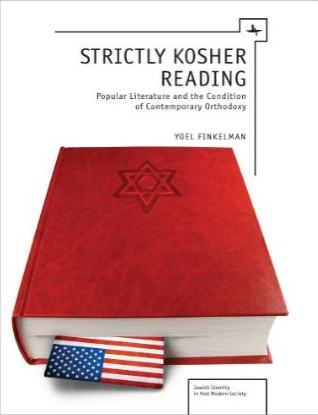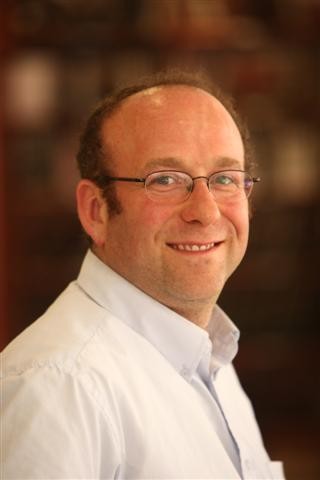Strictly Kosher Reading: An interview with Dr. Yoel Finkelman
There was once a time when mainstream American Orthodoxy was defined by the Hertz Chumash, the Birnbaum siddur and books by the Jewish Publication Society. In recent years, the rise of Haredi publishing house Artscroll, the expansion of newspapers Hamodia and Yated Ne’eman, and magazines such as Ami and Mishpacha, have changed the image of print in the Orthodox community. Dr. Yoel Finkelman of Bar Ilan University chronicles the development of English-language haredi publications in his book “Strictly Kosher Reading,” released over the summer. Dr. Finkelman was raised in Detroit and made aliyah in 1993. He resides in Beit Shemesh.
Sergey Kadinsky: In my own community, we have seen the rise of Ami, Binah, and Mishpacha. Many neighbors have Hamodia mailboxes in their homes. How did they emerge?
Yoel Finkelman: At first, there was the Jewish Observer, a kind of middlebrow, more serious “news and analysis” magazine, but it wasn’t a fun read, and it was not aimed at women or families, with their more domestic concerns. Mishpacha started in Israel in Hebrew, and was a staggering success, in part because it was more fun and relaxing to read than most of the Israeli Haredi press; it aimed at the whole family and it was much more open and willing to be controversial than say, Yated Ne’eman or Hamodia. Mishpacha started publishing in English, and shortly thereafter Jewish Observer closed. No doubt those were related, since Jewish Observer couldn’t handle the competition from Mishpacha and the internet. Publishers will produce what will sell, and light magazines with something for the whole family, including an occasional semi-eyebrow-raising critique of this or that problem within the community, will sell.
SK: How does a haredi publication address taboo topics without offending the gedolim? For example, when my newspaper addresses abuse or homosexuality, some rabbis get upset. When Yated or Hamodia address it, the same rabbonim offer quotes and interviews.
YF: There are a few ways. One is simple expurgation. You cannot talk about sex, certainly not with any level of explicitness. I spoke with one woman, author of a novel about dropout teens, which spoke about drug-use and criminal activity. But publishers insisted that the novel say nothing about these teens’ libidos. She is certainly not the only author who wants to include more open discussions of certain topics, and cannot because publishers won’t allow it. They believe it is not tzanua to discuss such things.
SK: what are the limitations?
YF: sometimes there are controversial topics that can be talked about, but only in certain restricted kinds of ways. For example, there is much talk about so called kids at risk, who drop out of school to get involved in substance abuse and the like. But, there is little or no discussion of kids who drift out of Orthodoxy to become, say, upstanding middle class accountants. Now there is an enormous amount of internal criticism in the discussion of dropouts, such as too much conformism and not enough personal attention in schools. But, any discussion of kids at risk inevitably paints observance as healthy and non-observance as a kind of pathology. You wouldn’t get that effect if you talked about well adjusted people who gave up observance. So, so there are limits on how far authors go in talking about controversial topics.
SK: Have the limitations changed in recent years?
YF: Things have definitely become more open. Here’s an example. A few months ago, Binah magazine published an article about a woman who dated her husband for a short time, and after the wedding discovered he had severe psychiatric problems that she didn’t know of, even though people on his side of the shidduch knew. This is a very harsh critique of the shidduch system, one that could not have been written even a few years ago. There is a tough balance to be had between the desire of a community for clear boundaries, the attitude that Haredi Judaism is good and all else is bad, on the one hand, and an awareness that not everything within Haredi Judaism is perfect.
SK: I find it interesting how publications that don’t allow photos of women have women editors and writers. Quite many, actually.
YF: Women are absolutely critical. Most novels are by and for women. Women likely do most of the book purchasing for the kids. Recently, there have been a handful of women writing haskamot (approbations), something brand new in the history of the Jewish book, and which exemplifies a dramatic change in the role of women.
SK: True, but on topics like Zionism, many modern orthodox readers feel left out of the “Artscroll Revolution.” Their rabbinic biographies are also often seen as too positive and not realistic enough.
YF: It’s history, as it ought to have happened, not as it did happen. Like many moderate haredim in Israel, American Haredi writers are de-facto Zionists. Proud of Israel, wanting to see the country succeed, liking to visit and participate, and rooting for it on the national scene.
But, ideologically and symbolically, that won’t get expression. The Netziv’s proto-Zionist leanings get left out of Artscroll histories, as do figures like Rav Reines, and Rav Kook. When they are presented, their Zionist attitudes get downplayed. Heroes are presented as wholly heroic, and therefore if they don’t fit that largely monolithic mold, they are either left out of the canon, or their histories are modified to make them “frummer” and to fit into today’s hashkafah.
SK: What new things have you learned about haredi publications during the course of your research for this book?
YF: Most importantly, that there is a vast quantity Haredi popular literature that claims to offer Torah-true attitudes toward things like marriage, child rearing, self-development, and which claims to reject “modern” or secular attitudes. Yet, these books are essentially identical to the mass market, secular books on the same topics. The forces involved in this publication industry are very complex. You can see the tensions and complexities of Haredi culture very clearly and in a very detailed way.
SK: My shul still uses Birnbaum and Hertz. Can their type of publications survive or will Artscroll and Feldheim simply drive them out?
YF: I would be shocked if Birnbaum and Hertz came back. But as Yogi Berra said, “the hardest thing of all to predict is the future.”

 56.0°,
Overcast
56.0°,
Overcast 







